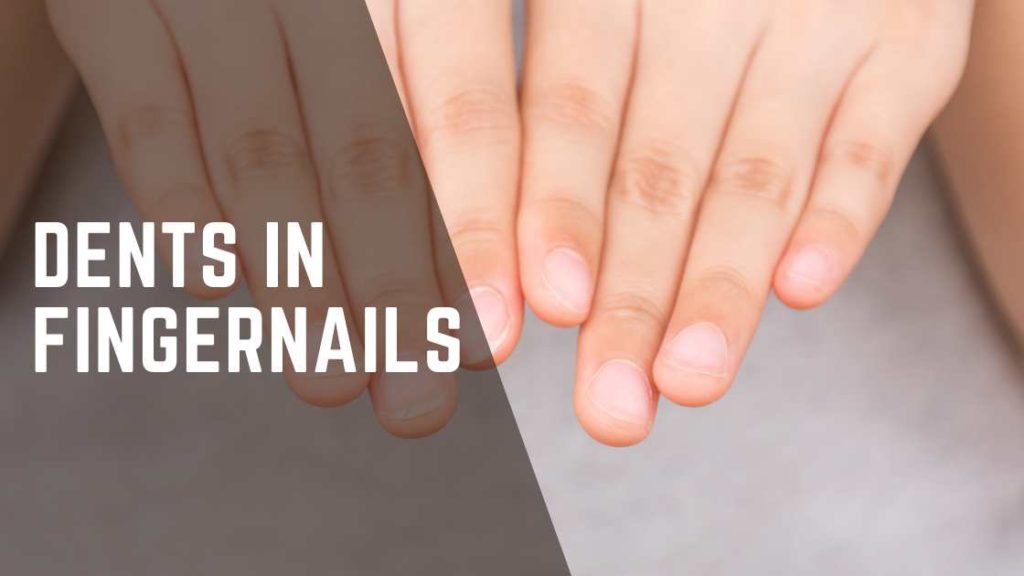
The protein keratin in the body is responsible for making the cells of the nails hard. While trauma can be a common cause of dents in fingernails, the condition can indicate an undiagnosed pathological state in the body. Awareness of the topic can lead to early consultation with the doctor and the commencement of the treatment.
What are the Less Known Causes for Dents in Fingernails
The less known causes of ridges in the nail are symptoms of the body not being at the pink level of health. Some of these conditions are:
Muehrcke’s Lines
These lines are seen in pairs of transverse white-colored lines spread horizontally across the nail and parallel to its base. Muehrcke’s nails or Muehrcke’s lines was first recognized by Dr. Robert Muehrcke’s which he mentioned in his 1956 publication in the British Medical Journal.(Source) Patients suffering from the following ailments and conditions get these lines:
- Nephrotic syndrome(most common)
- Glomerulonephritis
- Liver diseases
- Malnutrition
- High metabolic stress
- Trauma
Beau’s Lines
These are horizontal ridges on the nail plate. The following are the illnesses with which these lines are associated:
- Diabetes
- Patients treated with chemotherapy (Source)
- Systemic infection
- Raynaud’s disease
- Malnutrition
- Injury to the nails
These lines disappear as soon as the patient recovers from these conditions.
Terry’s Nails
Patients here have white nail plates and a horizontal dent closer to the fingertip. Some of the ailments associated with these ridges are:
- Type 2 diabetes mellitus
- Chronic allograft nephropathy
- Acute viral hepatitis
- Vitiligo
- Tuberculoid leprosy
- Elderly as part of normal aging
(Source)
Mee’s Lines
These white bands of ridges affect more than one nail. However, the nail bed is not involved here. As a result, the condition does not worsen with continuous nail growth. These dents are seen in people suffering from arsenic poisoning and serious systemic diseases (Source).
- Altitude sickness
- Chemotherapy
- Hodgkin lymphoma
- Leprosy
- Malaria
- Cancer
- Heart Failure
Lunulae
A white half-shaped moon-like coloring of the nail is mostly seen at its base in the thumbs. It is called the lunula. If this section of the nail turns blue, the person suffers from silver poisoning or Wilson disease. If it turns red, then it implies ailments like:
- COPD
- Heart Failure
- Carbon monoxide Poisoning
- Liver Cirrhosis
- Psoriasis
Injury to the Nail
these are the most common causes of ridges in the fingernails in healthy individuals. They get covered up along with the normal growth of the nail.
How to Prevent Dents in Fingernails
While horizontal dents in the nail indicate underlying diseases, the vertical ridges are harmless. Properly caring for the nail’s health can prevent these ridges on the nail bed. Some of these good nail care practices are:
Usage: It is a nasty habit to bite to chew the nails. Moreover, using pins to open, scratch, poke, or cut various objects is not advisable. Wearing gloves whenever the hands are used to do work is always beneficial. This simple measure can ensure the protection of the fingernails and the skin of the hands.
Grooming: Nails should be trimmed properly and kept clean. Their rough edges can be smoothened with a sharp file. It can also remove the dirt that accumulates in the nails. Finally, they should be moisturized using hand lotion. Bedtime is ideal for doing these tasks.
Nutrition: As malnutrition is an essential cause of developing ridges in the fingernails, nutrients like iron, zinc, and vitamin B-12 supplements should be included in the diet.
Treatment for Dents in Fingernails
- Treat the Condition: Go for treatment for the root cause.
- Psoriasis: Topical treatments, light therapy, or systemic medications.
- Eczema: Moisturizers, corticosteroid creams.
- Alopecia Areata: Corticosteroids or other medications as suggested by doctor.
- Nail Care:
- Keep nails short to minimize trauma.
- Moisturize the nail and cuticle regularly.
- Avoid nail-biting or picking.
- Topical Steroids: Good for localized nail pitting. Topical steroids combined with salicylic acid can be used with a doctor’s consultation.
- Calcineurin Inhibitors: Medications like tacrolimus or pimecrolimus might be prescribed in certain situations.
- Light Therapy: UVB phototherapy or PUVA (psoralen plus ultraviolet A).
- Over-the-counter Products: Nail-hardening creams.
- Diet and Nutrition: Balanced diet with adequate protein, biotin, zinc, and iron.
